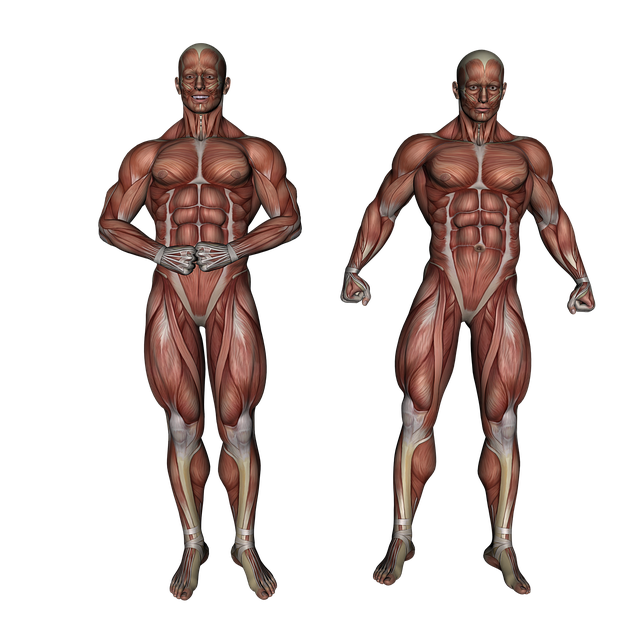Red light therapy, a non-invasive treatment, soothes sore muscles by stimulating cells, boosting energy production, and aiding repair while reducing inflammation. Popular among athletes for post-workout recovery, it effectively targets delayed onset muscle soreness (DOMS). However, temporary skin irritation may occur. Individuals with specific conditions, pregnant women, children, and those on medications should exercise caution due to limited research. Always consult a healthcare provider before using red light therapy for sore muscles to ensure safety and avoid potential adverse reactions.
Red light therapy, a non-invasive treatment gaining popularity for its potential health benefits, is particularly touted for soothing sore muscles. While it shows promise in reducing inflammation and promoting healing, understanding its safety profile is crucial. This article delves into the world of red light therapy for sore muscles, exploring potential risks, necessary precautions, and contraindications to ensure a safe and effective experience.
Understanding Red Light Therapy for Sore Muscles
Red light therapy, also known as low-level laser therapy (LLLT), has gained popularity as a non-invasive treatment option for various conditions, including sore muscles. When applied to the skin, red light is absorbed by cells, stimulating mitochondria and increasing energy production. This process promotes cellular repair, reduces inflammation, and enhances circulation in areas affected by muscle soreness or injuries.
For athletes or individuals experiencing muscle discomfort, red light therapy offers a promising alternative for pain relief and recovery. By targeting specific muscles with red light, it can help alleviate post-workout aches, reduce delayed onset muscle soreness (DOMS), and speed up the healing process after intense physical activity. Many users report improved flexibility and mobility as an added benefit.
Potential Risks and Side Effects
While red light therapy is generally considered safe, like any treatment, it’s important to be aware of potential risks and side effects, especially when using red light for sore muscles. Some users have reported minor issues such as skin irritation, redness, or itching, particularly with prolonged exposure or higher intensities. These side effects are typically temporary and subside once the therapy is stopped or the intensity is reduced.
More seriously, individuals with certain medical conditions like photoensitivity disorders or those taking specific medications that increase sun sensitivity should exercise extreme caution. Pregnant women and children should also avoid red light therapy unless supervised by a healthcare provider due to insufficient research on its effects in these populations. Always consult your doctor before starting any new treatment, especially if you have pre-existing health conditions or are taking medications.
Precautions to Ensure Safety
When considering red light therapy for sore muscles or other conditions, it’s essential to take certain precautions to ensure safety. While generally regarded as low-risk, individual sensitivity and specific health conditions may cause variations. Always start with lower intensities and gradually increase as tolerated. For instance, if using red light for muscle recovery, begin with a shorter duration and lower power setting, then adjust based on comfort and any adverse reactions.
Consulting with a healthcare professional is crucial before starting any new therapy, especially if you have pre-existing conditions or are taking medications. They can provide guidance tailored to your unique circumstances, ensuring that red light therapy complements rather than interferes with your overall health regimen. Remember, while red light therapy shows promise for various applications, including muscle soreness relief, it’s essential to approach it mindfully and under expert advice when necessary.
Who Should Avoid Red Light Therapy?
Red light therapy, while generally considered safe, may not be suitable for everyone. Individuals with certain medical conditions or those taking specific medications should exercise caution. For instance, people with photosensitivity disorders, such as lupus or psoriasis, should avoid red light therapy as it can trigger adverse reactions and make symptoms worse. Additionally, those with skin cancer or active infections should consult their healthcare provider before starting any light therapy to ensure it’s safe and won’t interfere with their treatment plans.
When considering red light for sore muscles, it’s important to remember that while it can be beneficial for recovery and pain relief, it may not be appropriate as a sole treatment for severe or chronic muscle conditions. Pregnant women, children, and individuals with certain eye conditions should also approach red light therapy with caution. Always consult a healthcare professional before starting any new treatment, especially if you have underlying health issues or are unsure about potential interactions with your current medications.
Red light therapy for sore muscles shows promise, but it’s crucial to weigh the benefits against potential risks. While generally considered safe, side effects like skin irritation and temporary redness are possible. Taking precautions, such as following recommended exposure times and avoiding certain conditions, can help ensure a safe experience. Individuals with sensitive skin, specific medical conditions, or those taking particular medications should consult a healthcare provider before using red light therapy for sore muscles to avoid any adverse reactions.
